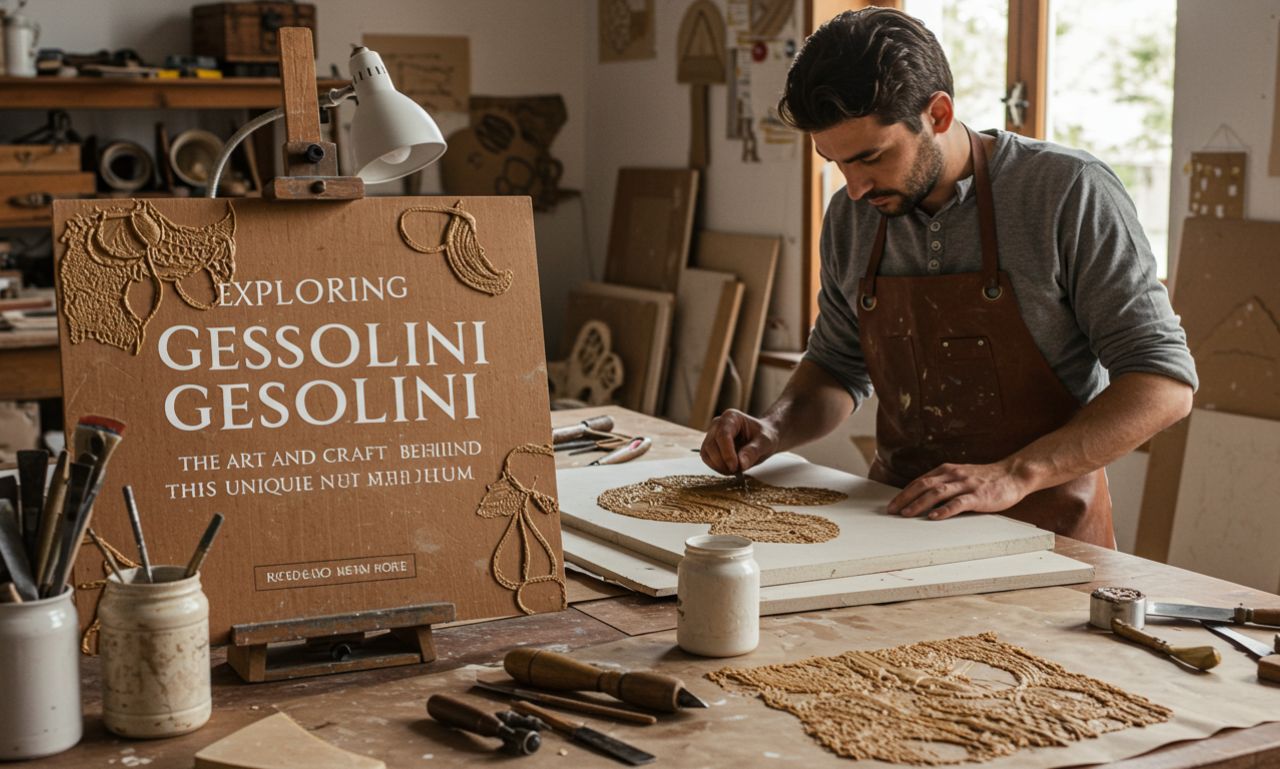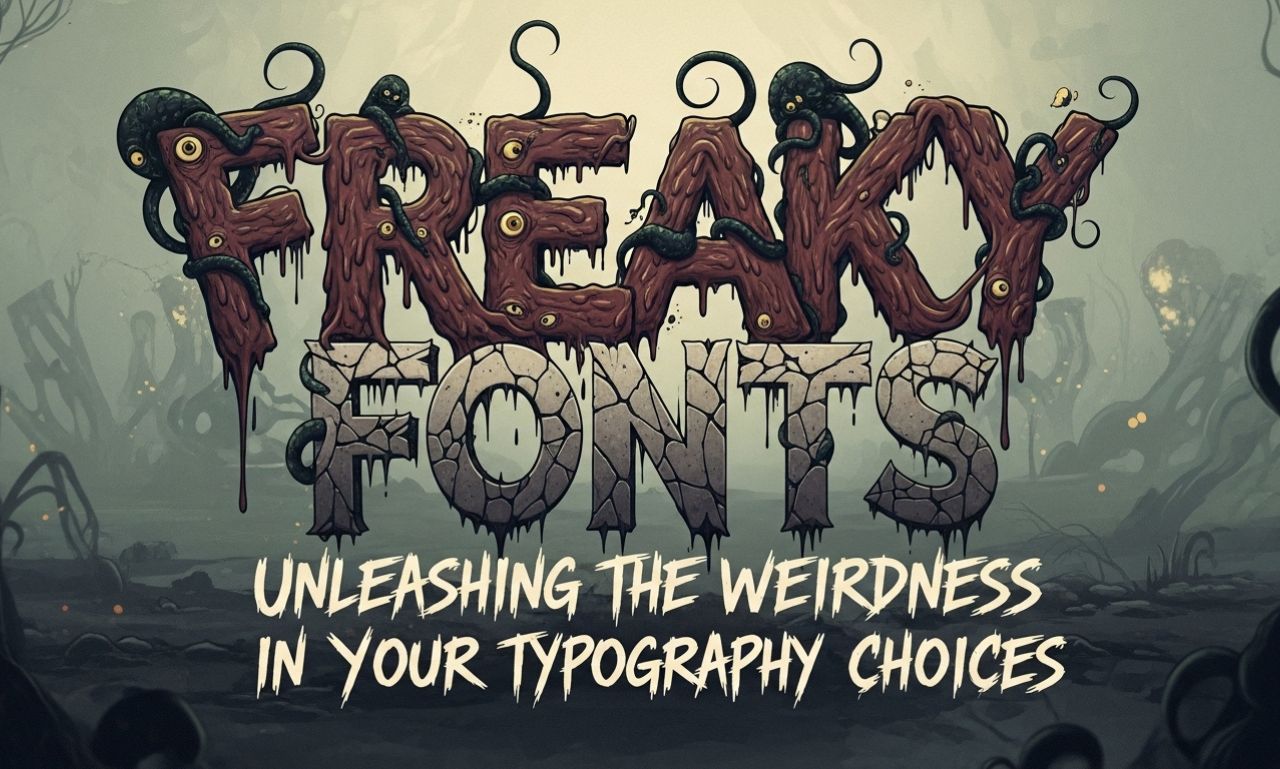Blog
Exploring Gessolini: The Art and Craft Behind This Unique Medium

Art has a magical way of transforming the ordinary into extraordinary. Among the myriad forms and mediums, gessolini stands out as an enchanting blend of tradition and innovation. This unique medium captivates artists and art enthusiasts alike with its rich texture and versatility. But what exactly is gessolini? As we delve deeper into this fascinating world, prepare to uncover not just its definition but also the history that shaped it, the techniques involved in crafting stunning pieces, and how you can incorporate this remarkable medium into your own artwork. Whether you’re an aspiring artist or simply curious about artistic expressions, gessolini offers something truly special for everyone. Let’s embark on this creative journey together!
What is Gessolini?
Gessolini is a captivating art medium that blends traditional techniques with contemporary creativity. At its core, it revolves around the use of gesso, a white paint mixture consisting primarily of chalk and binder. Artists often utilize this versatile substance as a base for their works.
However, gessolini goes beyond basic applications. It’s used to create textured surfaces or intricate designs on canvas and other materials. The result is an enchanting interplay of light and shadow.
This unique approach allows artists to explore various styles—from classical themes to modern abstractions—while maintaining the tactile quality gessolini offers. The rich texture invites viewers to engage more deeply with each piece, enhancing the overall experience of art appreciation.
As you delve into gessolini, you’ll discover endless possibilities waiting to be explored within this remarkable medium.
The History and Origins of Gessolini
Gessolini traces its roots back to the Renaissance, when artists sought new ways to express their creativity. Its name derives from the Italian word “gesso,” meaning plaster. This medium allowed for a unique blend of painting and sculpture.
Initially, artisans used gesso as a base for paintings on wood panels, but it soon evolved into an art form of its own. Artists began to experiment with layering techniques that added depth and texture to their works.
By the 18th century, gessolini gained popularity among European painters who appreciated its versatility. They embraced this medium not just for decorative purposes but also for intricate designs in fine arts.
Throughout history, gessolini has continued to evolve, attracting contemporary artists eager to explore its potential today. The journey of this remarkable medium reflects the ongoing dialogue between tradition and innovation in art.
Materials and Tools Used in Gessolini Art
Gessolini art thrives on a careful selection of materials that enhance its unique qualities. At its core, gessolini typically employs gesso, a mixture of chalk and binder. This creates a smooth surface for painting while offering an intriguing texture.
Artists often incorporate various pigments to achieve distinct colors and shades. These can range from traditional earth tones to vibrant hues, allowing for endless creativity.
The tools used in creating gessolini pieces are equally essential. Brushes with different bristle textures help manipulate the medium effectively. Palette knives become indispensable for layering and scraping techniques.
Spray bottles filled with water or mediums assist artists in blending colors seamlessly. Additionally, sponges offer another method for applying paint, contributing to the multidimensional aspects of each artwork.
Gessolini encourages experimentation with both materials and tools, inviting artists to explore their imagination fully.
Techniques for Creating Gessolini Pieces
Creating Gessolini pieces involves a blend of traditional and innovative techniques. Artists often start with a prepared surface, typically wood or canvas, ensuring it’s primed for texture.
Laying down the gesso is crucial. This medium can be tinted to create various backgrounds, adding depth to the artwork from the very beginning. Once dry, artists may use tools like palette knives or brushes to manipulate the gesso further.
Layering is key in Gessolini art. Each layer adds dimension and complexity; artists build upon previous work while allowing some elements to peek through.
Incorporating other materials like sand or fabric can enhance textural effects, making each piece distinct.
Experimentation plays an essential role too. Many artists enjoy discovering unexpected outcomes by mixing colors or applying unconventional techniques during their creative process.
Famous Artists Who Utilize Gessolini
Gessolini has captured the attention of various artists across different genres. These creators embrace its unique qualities to express their vision.
One notable artist is Marco Lippi, known for his stunning landscapes that blend traditional techniques with modern flair. His use of gessolini adds texture and depth, enhancing the emotional impact of each piece.
Another prominent figure is Elena Sorvino, who explores abstract forms through vibrant colors and dynamic patterns. Her innovative approach brings a contemporary twist to this age-old medium.
Emerging talents are also making waves in the gessolini scene. Artists like Javier Torres incorporate mixed media to push boundaries further. Their work highlights versatility while paying homage to traditional roots.
These artists demonstrate how gessolini can bridge past and present, allowing for endless creative possibilities in today’s art world.
How to Incorporate Gessolini into Your Own Artwork
Incorporating gessolini into your artwork can breathe new life into your creations. Start by experimenting with different bases, such as wood or canvas. The texture will interact beautifully with this medium.
Consider layering techniques to add depth. Apply a thin layer of gessolini and let it dry before adding more colors or textures on top. You’ll discover how versatile this medium can be.
Don’t hesitate to mix gessolini with other materials like acrylics or pastels. This fusion invites unexpected results and unique finishes that stand out in any piece.
Try using tools like palette knives or sponges for applying the paste. Each tool creates distinctive effects that enhance your artistic expression.
Allow yourself the freedom to explore abstract designs. Gessolini’s malleability encourages creativity without strict boundaries, leading you down innovative paths in your art journey.
The Beauty and Versatility of Gessolini in the Art World
Gessolini stands out as a captivating medium that embraces both beauty and versatility. Artists appreciate its unique texture, which can transform simple concepts into profound expressions. The smooth finish allows for intricate detail work, while the subtle sheen enhances colors in unexpected ways.
This medium is not confined to traditional forms; it adapts effortlessly across various styles. From abstract to realism, gessolini complements diverse artistic visions. Its ability to hold pigment creates vivid layers that draw viewers in.
Moreover, gessolini’s tactile nature invites interaction. Audiences often feel compelled to touch or explore the piece more closely, forging a connection with the artwork that is both personal and intimate.
As artists continue to experiment with gessolini, new techniques emerge, further broadening its applications in contemporary art scenes worldwide. This makes it an exciting choice for creators looking to push boundaries and redefine norms within their work.
Conclusion
Gessolini is more than just a medium; it’s a journey into the heart of artistic expression. Its rich history and unique properties make it an intriguing choice for artists seeking to push boundaries. The versatility of allows for endless creativity, enabling both seasoned creators and newcomers to explore their artistic potential.
As you consider incorporating gessolini into your own projects, remember that experimentation is key. Whether you’re layering textures or combining techniques, the beauty of this medium lies in its ability to adapt and surprise. With famous artists showcasing its possibilities, now is an exciting time to dive into art.
Embrace this dynamic tool in your creative repertoire. Discover how can elevate your artwork, transforming simple ideas into stunning visual narratives. As the world continues to evolve artistically, gessolini stands as a testament to innovation in art-making practices.
Blog
Your topics multiple stories: Compelling Blog Post with Diverse Stories

Stories have a unique power. They connect us, inspire us, and often teach valuable lessons. But not all stories are created equal. When it comes to blogging, the idea of using Your topics multiple stories can transform your content from good to unforgettable. Imagine blending different narratives that resonate with various audiences—creating a tapestry of experiences that engage readers at every turn.
So what makes “your topics multiple stories” such an essential strategy? It’s about weaving together diverse perspectives into one cohesive piece. This approach not only enriches your blog but also reflects the multifaceted nature of real life. People yearn for authenticity and variety in their reading material; they want to see themselves represented in the stories being told.
As we dive deeper into this topic, prepare to discover how embracing diversity in storytelling can elevate your blog posts and captivate your audience like never before.
What is Your topics multiple stories?
Your topics multiple stories refer to the diverse narratives that can be woven together around a single theme or subject. Each story adds depth and richness, creating a tapestry of experiences and perspectives.
This approach allows writers to explore different angles, showcasing varied voices. It encourages engagement by presenting readers with relatable content from multiple viewpoints.
Consider how personal anecdotes, expert insights, and cultural tales all contribute uniquely. Each narrative serves a purpose while enhancing the overall message.
When combined thoughtfully, these stories resonate more deeply with audiences. They foster connection and empathy through shared human experiences. Your topics multiple stories create an engaging reading experience that invites exploration beyond surface-level understanding.
Why One Story is Not Enough
A single story can only scratch the surface of a topic. It often lacks the depth needed to resonate with diverse audiences. Each individual has their own experiences and perspectives, which shape how they connect with narratives.
By sharing multiple stories, you create a tapestry of viewpoints that enriches understanding. Readers see themselves in different characters or situations, fostering empathy and engagement.
One narrative might miss critical elements or nuances that another could highlight. This is particularly true in complex issues where layers of context are vital for clarity.
Incorporating various tales allows for exploration beyond just one angle. It invites readers on a journey through varied landscapes of emotion and experience while encouraging deeper reflection on the subject matter at hand.
The Impact of Diversity in Storytelling
Diversity in storytelling enriches the narrative landscape. It brings together varied perspectives, experiences, and cultures.
When stories reflect a broad spectrum of voices, they resonate with wider audiences. Readers see themselves represented, fostering connection and empathy.
Incorporating diverse narratives challenges stereotypes. It dismantles preconceived notions and encourages deeper understanding among different communities.
Moreover, diverse storytelling sparks creativity. Writers draw inspiration from their unique backgrounds or those of others, leading to innovative plots and characters.
The impact extends beyond the narrative itself; it drives social change. Stories that highlight marginalized experiences can inspire action and awareness in ways traditional narratives may not achieve.
Embracing diversity transforms storytelling into a powerful tool for connection and growth. Each voice adds depth to the tapestry of human experience we share through literature.
How to Incorporate Multiple Stories into a Blog Post
To effectively incorporate multiple stories into a blog post, start by identifying a central theme. This will guide your narrative and keep readers engaged.
Next, select diverse perspectives that align with the main idea. These could be personal anecdotes, expert opinions, or even fictional scenarios. Each story should contribute something unique.
Transition smoothly between these narratives. Use subheadings or transitional phrases to maintain flow and coherence. This helps prevent confusion among readers as they navigate through different tales.
Additionally, weave in relevant data or quotes to support each story. This adds depth and credibility while keeping your audience hooked.
Remember to connect the dots at the end of each section. Highlight how these stories relate back to your overarching theme for clarity without losing their individuality.
Case Studies: Examples of Successful Blog Posts with Diverse Stories
One standout example is a travel blog that featured multiple perspectives on solo journeys. Each contributor shared their unique experiences, highlighting different cultures and challenges faced while traveling alone. This variety not only enriched the content but also connected with a broader audience.
Another compelling case comes from a lifestyle blog that incorporated stories from various generations about family traditions. By showcasing narratives from both grandparents and grandchildren, readers gained insights into how these customs evolve over time.
A health-focused blog successfully blended personal accounts of overcoming illness with expert advice. Each story offered hope alongside practical tips, engaging readers who may be facing similar battles.
These examples demonstrate how integrating diverse stories can elevate your content, making it relatable and impactful for an array of readers with varied backgrounds and interests.
Tips for Choosing Diverse Stories to Include
When selecting diverse stories, consider your audience’s interests. Think about the different backgrounds and experiences that may resonate with them.
Look for narratives that challenge stereotypes. These can spark conversations and broaden perspectives among readers.
Don’t shy away from unique voices. Seek out underrepresented groups whose stories are often overlooked but have much to share.
Explore various mediums too—podcasts, interviews, or even social media posts can add depth to your blog content.
Remember context is key; ensure each story aligns with your main theme while showcasing diversity effectively. This creates a cohesive message throughout your post.
Always prioritize authenticity over novelty. Genuine stories connect better than those merely chosen for their uniqueness.
Keep an open mind when researching potential subjects or themes; you might stumble upon a captivating tale in the most unexpected places.
The Importance of Authenticity in Multiple Storytelling
Authenticity is the heartbeat of compelling storytelling. When you weave multiple narratives, each story must resonate with genuine emotion and truth.
Readers can sense when a tale feels contrived or forced. They seek connections that are real and relatable. Authentic stories foster trust, building a bridge between the author and their audience.
Diverse voices add richness but should always reflect true experiences. This authenticity invites readers into a shared space of understanding and empathy.
Moreover, showcasing varied perspectives enhances credibility. When stories come from an honest place, they inspire others to share their own journeys.
Incorporating authentic tales also elevates your content’s overall value. It encourages engagement as audiences feel drawn to sincere expressions rather than mere entertainment.
Authenticity transforms storytelling into an art form that resonates long after it’s told.
Common Mistakes to Avoid When Using Multiple Stories
One common mistake is overwhelming your audience with too many stories at once. While diversity enriches content, bombarding readers can lead to confusion.
Another pitfall is choosing stories that lack relevance to your central theme. Each narrative should support the main idea, enhancing clarity rather than detracting from it.
Failing to transition smoothly between stories can disrupt flow. Readers appreciate seamless connections that guide them through different perspectives naturally.
Neglecting the importance of voice and tone may also dilute impact. Each story should resonate authentically with your audience while aligning with the overall message.
Avoid neglecting your call-to-action or purpose amid multiple narratives. Every story should ultimately drive towards engagement or a specific response from your readers; otherwise, they might feel lost in a sea of unrelated tales.
Conclusion
When it comes to crafting compelling blog posts, the power of your topics multiple stories cannot be overstated. Engaging with diverse narratives not only captures attention but also enriches the reader’s experience. By weaving different threads together, you create a vibrant tapestry that resonates with a broader audience.
Each story offers unique insights and perspectives. Readers appreciate variety; they seek connections on different levels. With one story, you may reach some, but incorporating multiple tales allows for deeper engagement across various demographics.
Authenticity remains paramount in this approach. Stories should feel genuine and relatable to maintain trust with your audience. Avoid common pitfalls like overloading readers or straying too far from your core message.
By following effective strategies and learning from successful examples, anyone can master the art of using multiple stories in their blogs. The potential for impact is vast when you embrace diversity in storytelling—so go ahead and explore those rich narratives waiting to be shared!
Blog
Soundgasm: How Audio Stimuli Can Enhance Your Experience

Imagine a world where sound transcends the ordinary. A realm where auditory experiences unlock new levels of pleasure and intimacy. Welcome to Soundgasm, an intriguing concept that explores how audio stimuli can elevate your sensory experience. Whether you’re unwinding after a long day or looking for inspiration during creative endeavors, the power of sound holds untapped potential.
In this blog post, we’ll delve into what Soundgasm truly is and uncover the science behind it. You’ll discover its numerous benefits, techniques for achieving this unique state of bliss, and real-world applications in everyday life. Join us on this auditory adventure as we embrace the enchanting influence of sound on our lives!
What is Soundgasm?
Soundgasm is an immersive auditory experience that transcends the ordinary. It harnesses the power of sound to stimulate various sensory pathways, creating a heightened state of awareness and pleasure.
At its core, Soundgasm involves listening to specific audio stimuli designed to evoke emotional responses. These sounds can range from soothing nature noises to electrifying beats or even whispered words. Each audio piece can transport listeners into different realms of sensation.
The beauty of Soundgasm lies in its versatility. It caters to individual preferences, allowing users to explore what resonates with them personally. This unique approach opens up new possibilities for relaxation, focus, and enjoyment through sound alone.
Whether you’re seeking motivation during work or a way to unwind after a long day, engaging with Soundgasm can significantly enhance your overall experience by tapping into the profound effects that sound has on our psyche.
The Science behind Soundgasm
Soundgasm taps into the fascinating realm of audio stimuli, where sound waves manipulate our emotions and physical sensations. When we hear certain frequencies or tones, they can trigger responses in our brain’s pleasure centers.
Research shows that specific sounds can release dopamine—often referred to as the “feel-good” neurotransmitter. This biochemical reaction enhances feelings of relaxation and euphoria.
Moreover, auditory experiences vary widely among individuals. Some people may find whispers soothing while others respond better to rhythmic beats or ambient noise. The uniqueness lies in personal preference and past experiences with sound.
The human ear is designed to detect a broad spectrum of frequencies, making it highly sensitive to changes in pitch and tone. Such intricacies allow us to engage deeply with audio content, unlocking new levels of enjoyment and emotional connection through Soundgasm techniques.
Benefits of Using Soundgasm
Soundgasm offers a world of sensory delight. Engaging with audio stimuli can elevate your mood and enhance relaxation. Just imagine sinking into soothing sounds after a long day.
Another benefit is the potential for heightened focus. Background music or ambient noise can help drown out distractions, allowing for greater productivity in work or study sessions.
Moreover, Soundgasm fosters creativity. Unique audio experiences spark inspiration and can lead to innovative ideas. It’s like giving your brain a fresh canvas to paint on.
Additionally, many users report improved sleep quality through calming soundscapes. Gentle rhythms create an ideal environment for drifting off peacefully.
These auditory experiences promote mindfulness. Paying attention to sound helps anchor you in the moment, reducing anxiety and stress levels effectively.
Techniques for Achieving a Soundgasm
To achieve a Soundgasm, first explore your surroundings. Find a quiet, comfortable space where you can fully immerse yourself in the audio experience.
Using headphones can amplify sensations. Opt for high-quality ones that deliver clear and rich sounds. This intensifies every whisper and subtle tone.
Next, experiment with various genres. Soft music or nature sounds might evoke tranquility while ASMR tracks could trigger tingles across your skin. It’s all about discovering what resonates with you personally.
Incorporate mindful breathing as you listen. Focus on how each sound makes you feel within your body. Let go of distractions to enhance the connection.
Don’t rush the process; allow yourself time to savor each moment fully. Sometimes, it’s in the silence between notes that true magic happens, unlocking deeper layers of auditory pleasure waiting to be discovered.
Applications of Audio Stimuli in Everyday Life
Audio stimuli permeate various aspects of our daily routines, often enhancing experiences without us even realizing it.
Think about your morning ritual. The sound of brewing coffee or the gentle hum of a podcast sets a positive tone for the day ahead. These sounds can uplift mood and motivate action.
In work environments, background music helps improve focus and productivity. Certain frequencies have been shown to reduce stress levels while boosting creativity.
Even in fitness, audio cues play a pivotal role. Energetic beats can inspire you to push harder during workouts, transforming exercise into an exhilarating experience.
Moreover, therapeutic uses are emerging too. Sound therapy leverages specific tones to aid relaxation and mental clarity, making it increasingly popular in mindfulness practices.
Embracing these audio elements enriches life’s moments subtly yet powerfully—making everyday activities more enjoyable and fulfilling.
Potential Risks and Precautions
While exploring the world of Soundgasm, it’s crucial to remain aware of potential risks. Audio stimuli can evoke strong emotions or memories, which may not always be pleasant for everyone.
Overexposure to certain sounds might lead to sensory overload. This can create discomfort and even anxiety in some individuals. It’s essential to listen at a moderate volume and take breaks if needed.
Another factor is personal preference; what works wonders for one person could be unappealing or triggering for another. Always pay attention to your reactions when engaging with audio content.
Consider the context in which you engage with these experiences. Using headphones in public spaces can draw unwanted attention or disturb those around you. Being respectful ensures that everyone enjoys their environment while exploring soundscapes together.
Embracing the Power of Soundgasm
Embracing the power of Soundgasm opens up a world of sensory exploration. The auditory experience can transport you to new realms, igniting creativity and deepening relaxation.
By integrating sound into daily routines, you can enhance focus or unwind after a long day. Whether it’s soothing rain sounds or invigorating beats, each choice shapes your mood uniquely.
Consider creating personalized playlists that cater to specific activities. This approach transforms mundane tasks into enjoyable experiences.
Mindfulness practices benefit immensely from audio stimuli as well. Sounds like nature or white noise create an inviting atmosphere for meditation and reflection.
The beauty lies in experimentation; discover what resonates with you personally. Allow yourself to be vulnerable with sound—let go of inhibitions and immerse fully in the moment. Embrace Soundgasm not just as a concept but as an essential part of your life journey.
Conclusion
Soundgasm represents a fascinating intersection of sound and human experience. As we delve into the nuances of audio stimuli, it becomes clear that our auditory senses can significantly impact our emotions, thoughts, and overall well-being. Embracing the power of Soundgasm can lead to enriching experiences in various aspects of life.
From enhancing relaxation during meditation to stimulating creativity while working on projects, audio stimuli serve as versatile tools for improvement. However, it’s essential to approach this journey mindfully. Understanding the science behind sound and its effects ensures that you harness its potential safely.
Whether you’re exploring Soundgasm for personal growth or seeking new ways to engage with your environment, there’s no denying the profound effect sounds have on our lives. So plug in those headphones or find a quiet space—your next adventure awaits through the waves of sound!
Blog
Freaky Fonts: Unleashing the Weirdness in Your Typography Choices

Typography is more than just choosing a font; it’s about creating an emotional connection with your audience. The right typeface can evoke feelings, convey messages, and even shape perceptions. Enter the world of freaky fonts—a realm where conventional design norms are tossed aside for something bold and unexpected.
Freaky fonts have emerged as a fun way to express creativity and individuality in typography. They challenge the status quo, allowing designers to push boundaries while making their projects unforgettable. Whether you’re designing a quirky poster or revamping your brand’s identity, embracing these unconventional fonts can set you apart from the competition.
Let’s dive deeper into what makes freaky fonts so appealing and how they can add that extra zing to your designs.
What is Freaky Fonts?
Freaky fonts are the wild children of typography. They dare to defy convention and embrace eccentricity. These typefaces challenge standard design norms, injecting personality and flair into any project.
Imagine a font that twists, turns, or even bounces across the page. Each letter can tell a story—one that’s quirky and unexpected. This is where freaky fonts shine; they capture attention in ways traditional fonts simply can’t.
Used strategically, these unconventional typefaces can evoke emotions and create memorable experiences for your audience. Whether you’re designing a poster or crafting a brand identity, freaky fonts offer an avenue for creativity that invites exploration.
In the evolving landscape of graphic design, embracing these unusual styles allows designers to stand out in crowded markets. The beauty lies not just in their oddities but also in how they push boundaries within visual communication.
The rise of unconventional fonts in design
In recent years, the design landscape has witnessed a vibrant shift towards unconventional fonts. This trend reflects a broader desire for creativity and individuality in branding.
As digital platforms evolve, designers feel empowered to break away from traditional typefaces. The rise of social media has amplified this movement, giving brands an opportunity to express their unique voices through typography.
Unconventional fonts challenge norms and invite curiosity. They can evoke emotions that standard fonts simply cannot achieve. A quirky letterform can catch attention faster than any polished serif or sans-serif ever could.
Moreover, these freaky fonts often tell stories—each curve and angle representing something meaningful. As businesses seek to connect with audiences on a deeper level, embracing odd typographic choices becomes more appealing than ever before.
With each bold choice made by designers, the realm of typography continues to expand into exciting new territories filled with personality and flair.
Breaking the rules: using weird fonts to make a statement
Typography is about more than just legibility. It’s a form of expression. When you break away from traditional font choices, you invite creativity into your designs.
Weird fonts challenge norms. They grab attention and spark curiosity. A quirky typeface can evoke emotions that standard fonts simply cannot.
Imagine a music festival poster adorned with an unpredictable script or a tech startup embracing an abstract geometric style. These choices tell stories without words.
Using unconventional fonts isn’t just for fun—it’s strategic branding. It communicates personality and sets the tone for what audiences can expect.
However, balance is key when playing with typography. Ensure that your message remains clear while allowing the freaky font to shine through as part of your visual identity.
How to choose the right freaky font for your project
Choosing the right freaky font can be a thrilling adventure. Start by considering your project’s message. What do you want to convey? A quirky brand might benefit from playful letters, while an edgy campaign could call for something more aggressive.
Next, think about legibility. While it’s tempting to go wild with unconventional designs, clarity is key. Make sure your audience can read the text without straining their eyes.
Consider pairing your freaky font with complementary typography. Mixing styles can elevate your design and create harmony between elements.
Also, test out different sizes and weights. Some fonts shine in bold formats while others work best in subtle tones.
Collect feedback before finalizing your choice. Different perspectives can help you see how well the font aligns with your vision and resonates with viewers.
Examples of successful use of freaky fonts in branding and advertising
Freaky fonts can turn heads and create memorable impressions. One standout example is the quirky typeface used by the popular ice cream brand Ben & Jerry’s. Their playful, imperfect lettering reflects their fun-loving ethos and connects with customers on an emotional level.
Another great instance is found in the branding of Netflix’s “Stranger Things.” The retro-inspired font captures nostalgia while reinforcing its supernatural themes, drawing viewers into a world that feels both familiar and eerie.
The fast-food chain Taco Bell also embraces unconventional typography in its marketing materials. Their bold use of colorfully distorted letters adds a sense of excitement to their promotions, making them impossible to miss.
These brands show how embracing freaky fonts can not only convey personality but also enhance engagement with their audience. Each choice tells a story, inviting consumers to explore further.
Tips for incorporating freaky fonts into your designs
When incorporating freaky fonts into your designs, start with purpose. Ask yourself what emotion or message you want to convey. The right font can amplify the intended vibe.
Consider contrast carefully. Pairing a wild typeface with simpler ones creates balance and enhances readability. This way, the freaky element stands out without overwhelming viewers.
Limit usage to key areas. Use quirky fonts for headlines or calls-to-action instead of body text. This keeps your design visually engaging while ensuring clarity remains intact.
Experiment with color and spacing. Sometimes, adjusting these elements can elevate a freaky font’s appeal dramatically, making it pop even more on the page.
Test your choices across different backgrounds and formats. What looks great online might not translate well in print or vice versa; ensure versatility is part of your design process.
Potential challenges and how to overcome them when using unconventional fonts
Using freaky fonts can be a double-edged sword. While they add flair, they can also create readability issues. If your audience struggles to decipher the text, your message may get lost.
Another challenge is brand consistency. An unconventional font might clash with established branding elements. It’s essential to ensure that any quirky choice aligns with your overall visual identity.
Additionally, some platforms or print materials may not support exotic typefaces well. This could lead to distorted designs if proper testing isn’t done prior to launch.
To navigate these hurdles, start by selecting a freaky font that’s legible at different sizes. Use it sparingly for emphasis rather than as the main text body.
Always test how your chosen font appears across various media and devices before finalizing it in designs. Embrace feedback from peers or focus groups on its effectiveness as part of the process.
Embracing weirdness in typography and standing out
Embracing weirdness in typography opens doors to creativity. It invites you to challenge the ordinary and explore the extraordinary. When you opt for freaky fonts, you’re making a statement that resonates with uniqueness.
This approach allows brands to cultivate an identity that stands apart. Audiences are drawn in by the unexpected, sparking curiosity and engagement. A bizarre font can become instantly memorable, leaving a lasting impression.
Think about how unconventional typography can evoke emotion or convey personality. It’s not just about aesthetics; it’s about storytelling through style.
Dare to experiment with shapes and sizes that defy norms. The right choice can transform your message into something truly captivating, ensuring it doesn’t get lost among competitors.
By embracing this quirkiness, you’ll not only capture attention but also invite dialogue around your brand’s values and mission.
Conclusion
Typography is more than just a way to present words. It’s an art form that can evoke emotions, convey messages, and even set the mood for your brand or project. With freaky fonts becoming increasingly popular in design circles, it opens doors to creativity and self-expression.
Freaky fonts break away from traditional norms. They invite designers to explore unique typography choices that challenge conventional aesthetics. The rise of these unconventional styles reflects a broader desire for authenticity and individuality in branding.
When selecting a freaky font, consider your audience and the message you want to communicate. Aligning your choice with your project’s goals helps ensure clarity while still making an impact.
Successful brands have embraced this trend by incorporating unusual typefaces into their advertising strategies. Companies like Mailchimp or Netflix have used quirky fonts effectively to enhance their identity while standing out in crowded markets.
However, using freaky fonts comes with its challenges. Legibility often takes a hit when dealing with overly intricate designs. Striking the right balance between creativity and readability is essential for maintaining effective communication.
As we lean into the weirdness of typography, embracing unconventional choices allows us all to stand apart from competition. So go ahead—dare to be different! Let those freaky fonts shine through in your next design project; they might just be what sets you apart in today’s saturated visual landscape.
-

 Health2 months ago
Health2 months agogel ooru: Incorporate into Your Daily Routine for Radiant Skin
-

 Digital Marketing2 months ago
Digital Marketing2 months agoEporer: How This Innovative Tool Revolutionizes Digital Marketing
-

 Technology2 months ago
Technology2 months agointernetchocks: The Impact of Online Communication and Connectivity
-

 Travel2 months ago
Travel2 months agoPertadad: Should Be on Your Travel Bucket List This Year
-

 Business2 months ago
Business2 months agoRowdy Oxford Lawsuit: It Means for Local Businesses and Community
-

 Blog2 months ago
Blog2 months agoChóim24h: Your Ultimate Guide to 24-Hour Convenience
-

 Technology2 months ago
Technology2 months agoSpaietacle: Bridging Cultures Through Innovative Visual Experiences
-

 Celebrity2 months ago
Celebrity2 months agoLiz Shanahan: A Trailblazer in Her Field and a Source of Inspiration
